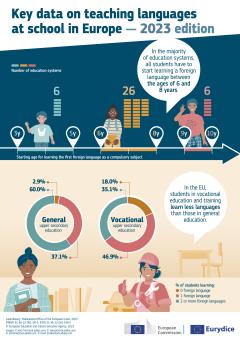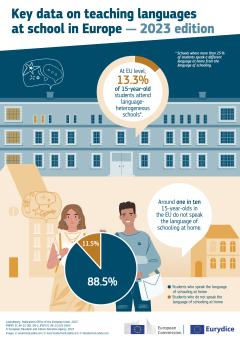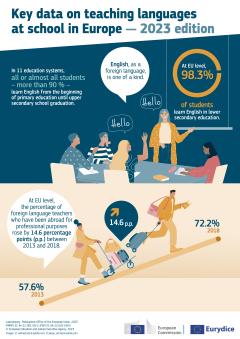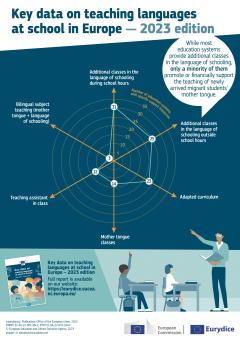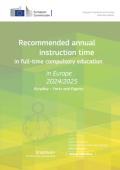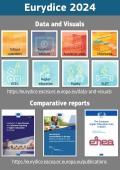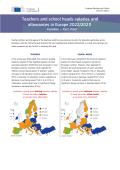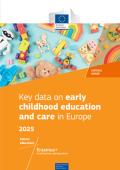Key data on teaching languages at school in Europe – 2023 edition
Linguistic diversity is part of Europe’s DNA. The mosaic of European languages includes not only countries’ official state languages but also the regional or minority languages spoken for centuries on European territory, not to mention the languages brought by migrants. Supporting language diversity and promoting language learning has been a constant policy line of the European Union.
The 2023 edition of Key data on teaching languages at school in Europe is the fifth edition of the report. As the past editions, this new one intends to contribute to the monitoring of the policy developments in the field of (foreign) language teaching in schools in Europe.
This report includes 51 indicators covering a wide range of topics relevant to (foreign) language policy at the EU and national levels. Data from the Eurydice Network is complemented by Eurostat data and data from two international surveys carried out by the Organisation for Economic Co-operation and Development (OECD): the 2018 Programme for International Student Assessment (PISA) and the 2018 Teaching and Learning International Survey (TALIS).


